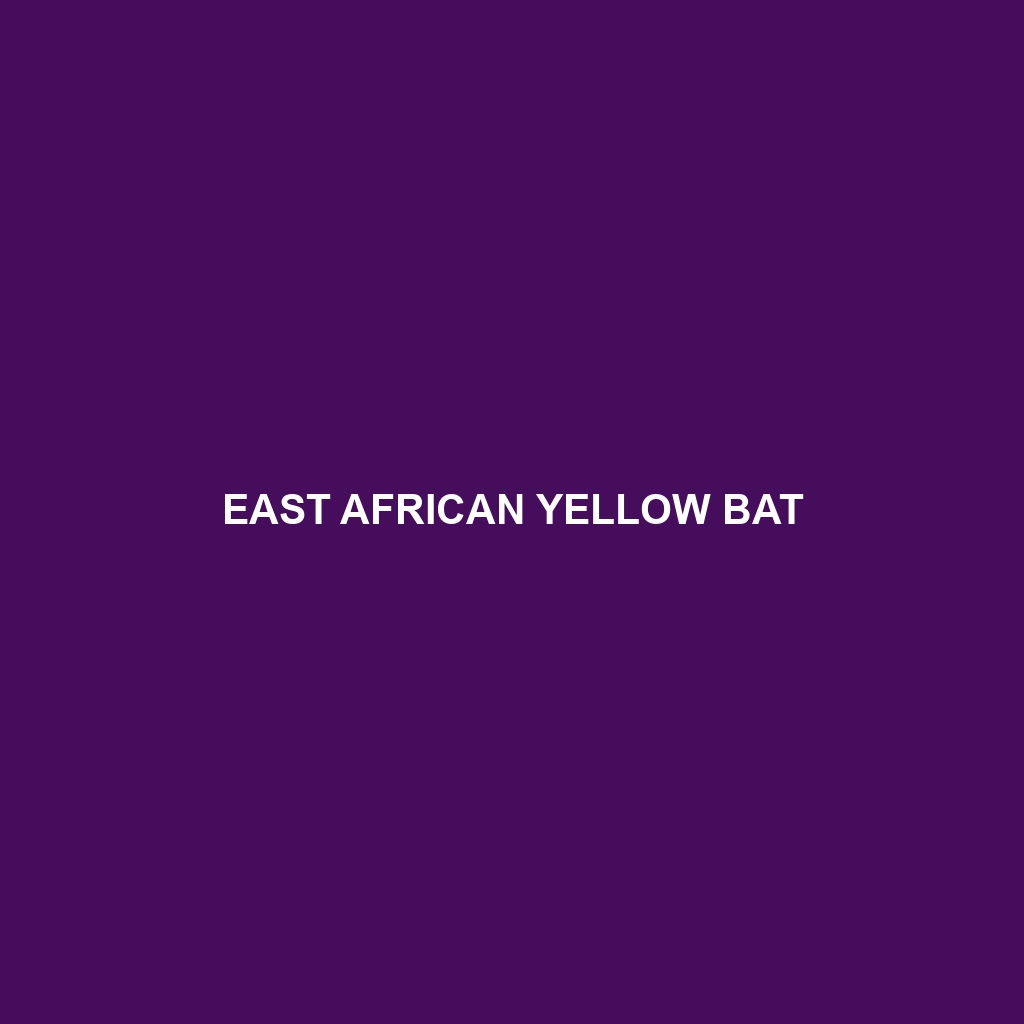Common Name: East African Yellow Bat
Scientific Name: Scotophilus dinganii
Habitat:
The East African Yellow Bat primarily inhabits the sub-tropical and tropical regions of East Africa, including countries such as Kenya, Tanzania, and Uganda. This species is commonly found in forested areas, savannas, and near water bodies, where it can roost in trees and caves. The bat prefers environments with a good canopy cover to facilitate its nocturnal flying habits.
Physical Characteristics:
The East African Yellow Bat is characterized by its medium size, typically ranging from 9 to 12 cm in body length. Its fur is a striking yellow color, which can vary in intensity, providing excellent camouflage among the foliage. The bat has large ears and a relatively short snout, with noticeable wing spans that reach up to 30 cm. Its unique coloration and prominent features make it easily distinguishable from other bat species.
Behavior:
This species is predominantly nocturnal, exhibiting behaviors typical of insectivorous bats. The East African Yellow Bat is known for its agile flight and foraging patterns, often seen fluttering above vegetation to catch insects mid-air. Additionally, these bats utilize echolocation to navigate and locate prey, showcasing sophisticated acoustic adaptations. They are social creatures, often roosting in groups, which can enhance their sense of security.
Diet:
The East African Yellow Bat primarily feeds on a diet rich in insects, particularly moths, beetles, and other flying invertebrates. They are known to hunt during twilight hours and utilize their exceptional hearing to detect prey. Their feeding habits play an integral role in controlling insect populations, benefiting both agriculture and local ecosystems.
Reproduction:
Reproductive activity in the East African Yellow Bat typically occurs during the warmer months, with mating season peaking around late spring. Females give birth to a single pup after a gestation period of approximately two months. Maternal care is significant, as mothers are known to nurse their young while continuing to forage for food, ensuring that the pups grow rapidly until they are capable of independent flight.
Conservation Status:
The East African Yellow Bat is currently classified as ‘Least Concern’ by the International Union for Conservation of Nature (IUCN). However, habitat destruction and climate change pose potential threats to its populations. Conservation efforts are essential to maintain healthy ecosystems and protect this species from future risks.
Interesting Facts:
One fascinating aspect of the East African Yellow Bat is its ability to adapt to various habitats, which enhances its survival in changing environments. Additionally, it has been observed engaging in communal roosting, showcasing social behaviors that contribute to their dynamics and interaction with other bat species.
Role in Ecosystem:
The East African Yellow Bat plays a crucial role in its ecosystem as a predator of insects, thereby contributing to the balance of pest populations and serving as prey for larger predators. Its presence indicates a healthy environment, promoting biodiversity within its habitat, and ensuring the stability of local ecosystems. Understanding the role of this bat is essential for conservation strategies aimed at protecting wildlife in the regions they inhabit.
